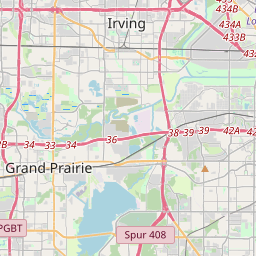Kit Community
Historical marker location:






Virginia natives John W. and Jestine Gorbit had a farm in this area by 1850. A settlement known as Gorbit grew up around it and became a stop on a pre-Civil War postal route. In 1855, Jonathan Story moved here from Illinois with his wife and 13 children. Story's son, Isaac "Ike," who later returned to Illinois for several years, settled in Gorbit with his wife and children in 1873. He opened a store and in 1889 established a post office; his second wife, Mary Elizabeth, was the first postmaster. Because of confusion with a similarly named town, the Gorbit post office and settlement were renamed Kit in 1894. Residents established Kit Cemetery in 1896 near Ike Story's store. Early area schools included one that began in the late 1850s, with Hezekiah Lucas as teacher. Mark Callister Lively opened a school in 1890. Lively School served the Kit Community and functioned as the worship space for the area's first Catholic and Church of Christ congregations. Kit residents established Kit School in 1902. The Town of Irving was founded in 1903 west of the community, along the tracks of the Rock Island Railroad. Some of Kit's businesses and churches moved to the new townsite. The post office moved to Irving in 1904. Irving residents petitioned the legislature for a school district in 1909, and the Kit and Lively schools ecame the Irving Independent School District. Kit maintained its own identity for several more years, but by the 1940s, its once agricultural character had vanished into the growing City of Irving and the Dallas-Fort Worth metropolitan area. Today in Kit Cemetery, which is adjacent to Oak Grove Cemetery, are found the names of pioneer amilies - Story, Smith, Cox and many others - who contributed to the growth and development of Irving. (2005)
As one of the most visible programs of the Texas Historical Commission (THC), historical markers commemorate diverse topics in Texas history, including: the history and architecture of houses, commercial and public buildings, religious congregations, and military sites; events that changed the course of local and state history; and individuals who have made lasting contributions to the state, community organizations, and businesses.
The Texas Rangers, a famous law enforcement agency, were first organized in 1835 to protect settlers from Native American attacks.
Established in 1846, Dallas County played a crucial role in the development of North Texas. The county's namesake, George Mifflin Dallas, was the Vice President of the United States at the time. The city of Dallas, the county seat, quickly emerged as a center for trade and commerce due to its strategic location along major transportation routes.
During the late 19th century, Dallas County experienced rapid economic growth driven by industries such as cotton, railroads, and cattle. The city of Dallas became a major hub for cotton trading, attracting business and establishing itself as a prominent financial center in the Southwest.
In the 20th century, Dallas County continued to evolve and diversify its economy. The discovery of oil in the nearby East Texas Oil Field in the early 1900s led to the development of the oil industry in the region, contributing to the county's prosperity. The county also played a significant role in the aerospace industry, hosting the headquarters of major aerospace companies and contributing to the growth of aviation technology.
Dallas County's cultural landscape reflects its vibrant and diverse population. The county is home to a wide range of cultural institutions, including museums, art galleries, theaters, and music venues. Dallas County also played a notable role in the civil rights movement, with important milestones in the fight for equality and integration.
Today, Dallas County stands as a major economic and cultural center. It boasts a robust economy supported by various industries, including finance, technology, healthcare, and telecommunications. The county is known for its thriving arts scene, professional sports teams, and diverse culinary offerings.
With its rich history, economic vitality, and cultural significance, Dallas County continues to shape North Texas as a dynamic and influential region.
Dallas County Timeline
This timeline provides a concise overview of the key events in the history of Dallas County, Texas.
Pre-19th Century: The area was originally inhabited by various indigenous tribes, including the Caddo, Wichita, and Comanche.
1839: Dallas County was officially established and named after George Mifflin Dallas, the Vice President of the United States under President James K. Polk.
Mid-19th Century: Dallas County experienced significant growth with the establishment of Dallas as a trading post and the arrival of settlers drawn by the opportunities in trade and agriculture.
Late 1800s: The county prospered with the expansion of railroads, particularly the Texas and Pacific Railway and the Houston and Texas Central Railroad, which solidified Dallas as a major transportation hub.
Early 20th Century: Dallas County saw a surge in economic development and urbanization. Industries such as oil, cotton, banking, and manufacturing fueled the city's growth.
1960s: Dallas County gained national attention due to its role in the civil rights movement. The city of Dallas was the site of the assassination of President John F. Kennedy in 1963.
Late 20th Century: Dallas County continued to experience rapid growth and diversification, becoming a major center for business, finance, and telecommunications. The county is known for its vibrant arts and cultural scene, including the Dallas Arts District.
Today, Dallas County is the second-most populous county in Texas and home to the city of Dallas, a thriving metropolitan area.